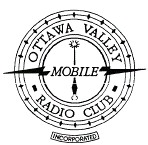“When on the trail, at Field Day, or whenever a good antenna is unavailable, a random wire can save the day, but it is important to understand its properties. At multiples of half wavelengths of the transmit frequency the impedance is so high that tuners in most rigs often can't match it. The trick, therefore, is either a more capable tuner or, to cut the wire so that it is not a half-wave multiple of any frequency you want to use.”
“A so-called random wire antenna is an end fed antenna. As typically installed, it is a compromise antenna but great for portable use because it is easy to pack and easy to install. One end goes straight into the rig, often with no feedline, and the other end in the air attached to something as high as you can find. It is important to use a counterpoise. While these lengths have been shown to work well on many bands, which is helpful if you're in a hurry to get on the air, read up on the topic and experiment.”
When considering a random wire or end-fed antenna, a standard recommendation for 80M and above from the early days of amateur radio (see QST, March 1936, p. 32, "An Unorthodox Antenna") is to use an 84' long end fed and a 17' long counterpoise (6.5' for 20m).
A useful resources for considering various band combinations, noting that the fewer bands selected at at least 1/4 wavelength long, the fewer high impedance regions to avoid can be found at:
https://udel.edu/~mm/ham/randomWire/.
I have used this resource when thinking about how long a wire I can use at my cottage with my Yaesu FC-40 wire antenna tuner. Turns out I have one more piece of hard-drawn copper 16 gauge antenna wire that is 173 feet long and may work well on a broad range of bands.
Anyway a resource I have found useful that I think is worth bookmaking.
73, Alan VA3IAH
